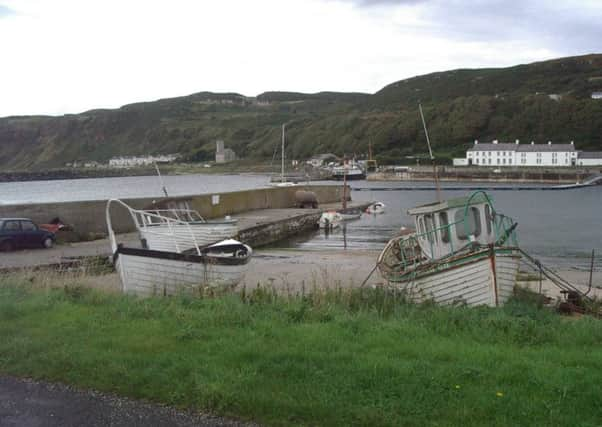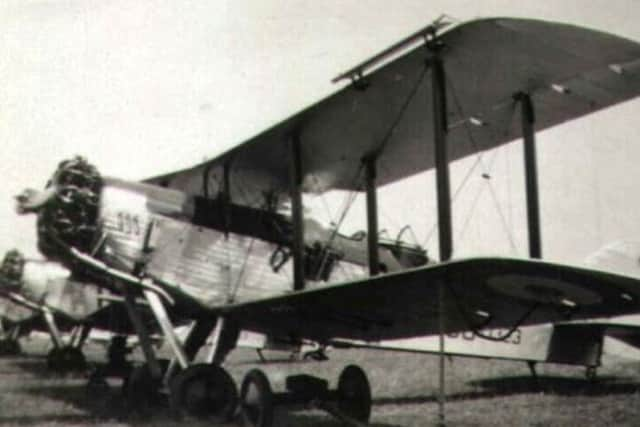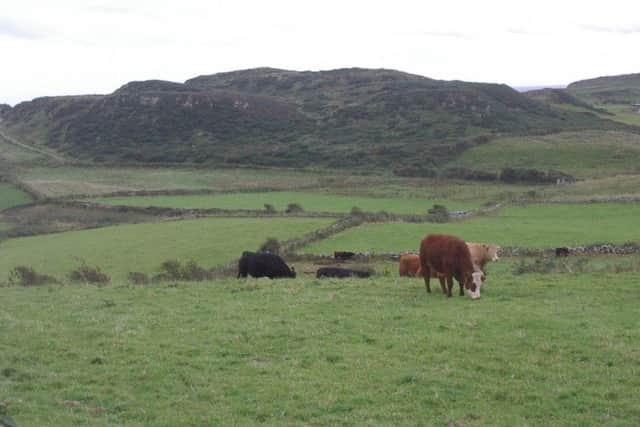Eleanor marked anniversary of storm on Rathlin Island that became world news


And even though the gales of 1938 were the longest lasting winds ever to hit Rathlin, the islanders’ emergency was further “elaborated” by fake news!
Regular Roamer contributor Mitchell Smyth, formerly from Ballycastle and currently a retired travel writer in Canada, shares a turbulent tale that began raging on 11th January 1938.
Advertisement
Hide AdAdvertisement
Hide AdA news story from an international press agency went around the globe on 1st February 1938: “A plane from Aldergrove airdrome (sic) in Northern Ireland today dropped food to famine stricken inhabitants of Rathlin Island, between Scotland and Northern Ireland. Bad weather for three weeks had marooned the islanders.”


Much of the story was correct but the phrase “famine-stricken” was something of an exaggeration – yes, food was becoming scarce but nobody was starving.
The storm, which had raged since 11th January, abated three days later and Ballycastle boatman Jack Coyles landed relief supplies, including three weeks’ mail and the latest newspapers.
Seemingly, supplies hadn’t been dropped from the air, because according to aviation enthusiast Hugh McGrattan, former editor of the Coleraine Chronicle, two planes managed to land on the island during the storm – Westland Wallace Day Bombers from Aldergrove, then a small RAF aerodrome.
Advertisement
Hide AdAdvertisement
Hide AdRathlin has regularly been cut off by bad weather but the 1938 storm was the longest in living memory.


Mitchell Smyth has visited Rathlin many times, usually in the company of ferryman Jack Coyles who recounted other interesting details about the historic winds of 1938.
Fortunately there were no medical emergencies, but one islander, Margaret McCouaig, went into labour at the height of the storm.
Her son Laurence, delivered by the local midwife, became known all over the island as “the storm baby”.
Advertisement
Hide AdAdvertisement
Hide AdAs well as his local reminiscences of the storm 80 years ago, Mitchell has been telling Roamer some other “titbits” he picked up over the years on Rathlin.


Standing as it does between Ireland and Scotland (six miles from Ballycastle, 13 miles from the Mull of Kintyre), Rathlin was once the focus of a major legal dispute.
In 1617 Ayrshire claimed it as a part of Scotland and the claim went right to the court of King James I.
The verdict went to Ireland on the grounds that there were no snakes on Rathlin (presumably courtesy of St Patrick!) whereas there were snakes in Scotland!
Advertisement
Hide AdAdvertisement
Hide AdAnd that ancient dispute might be revived sooner than we think!


“I visited Rathlin last summer,” Mitchell told me, “and talked to some islanders about, of all things, Brexit!”
Some of the folk he spoke to told him – “if Scotland achieves independence it might stay in Europe, and then Rathlin could apply to join it!”
So maybe “the snake debate” will start again!
Mitchell was part of a press party to Rathlin in 1968, accompanying Lord Andrew Bruce, Earl of Elgin, a descendant of Robert the Bruce, the king of Scotland.
Advertisement
Hide AdAdvertisement
Hide AdHeavy seas prevented the party from going ashore at Bruce’s Cave, where Bruce, who had fled to Rathlin after a defeat by the English, is supposed to have watched a spider weaving a web, thus teaching Bruce the virtue of patience.
Lord Andrew proudly displayed the huge, heavy, two-handed broadsword he’d brought with him that Robert wielded at Bannockburn in 1314, when he defeated the English and regained his throne after his return from Rathlin.
Mitchell also told Roamer about the ancient feud between two Highland clans that spilled over into bloodshed on Rathlin in 1642 when soldiers of the clan Campbell invaded the island, then occupied by the MacDonnells of Antrim.
The MacDonnells were kin of the Scots MacDonalds, long-time enemies of the Campbells.
Advertisement
Hide AdAdvertisement
Hide AdThere’s a hill on the island called Crock-a-screidlin (hill of screaming) where the women and children watched as their men were slain in a hollow called Lack na Vista Vor (the hollow of the great defeat).
The Campbells then turned their attention to the women and children and threw them, alive, from the cliffs.
No one was spared. Altogether, more than 300 perished.
Author H I Law, in Rathlin Island and Parish, writes: “It is small wonder that this slaughter . . . caused the name of Campbell to be so hated that, for many years, no one of that name dared set foot on the island.”
In 1955, Mitchell reported for the Northern Constitution about the delivery of the first new car to Rathlin, “a Ford 8, as I recall” he told me “for the district nurse.”
Advertisement
Hide AdAdvertisement
Hide AdSome say that the vehicle was the first car on the island, “and indeed it may have been the first legal car,” says Mitchell “but I’m told it was preceded by some old bangers, transported in pieces and reassembled, but never insured and never seen on the infrequent visits by a constable from Ballycastle!”
And Mitchell ends with a final thought about the storm that made international news 80 years ago.
As we all know, Rathlin is famous as a seabird sanctuary.
The birds produce many thousands of eggs and during the Second World War, when rationing was in effect, consignments of the eggs were shipped to the mainland for human consumption.
“I wonder,” Mitchell muses, “if the eggs were harvested for local tables during the storm of 1938?”